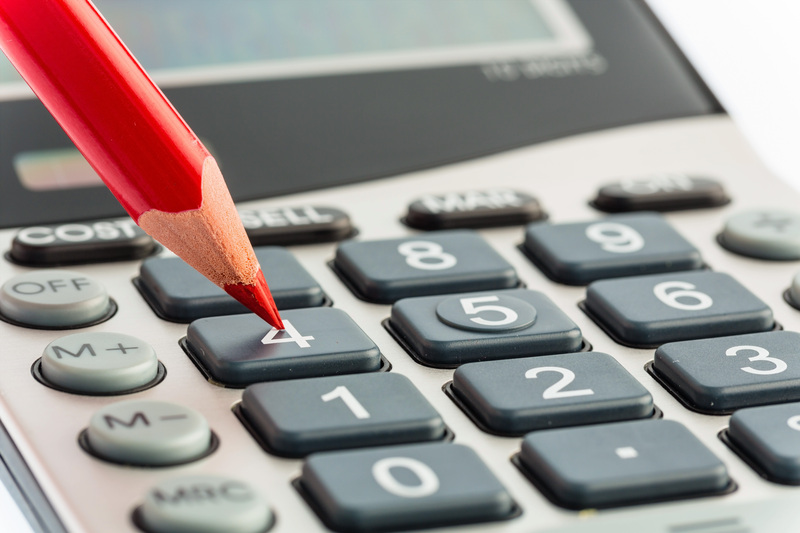Musical Moving Mistakes: The DIY Dilemma
Posted on 22/05/2025
Musical Moving Mistakes: The DIY Dilemma
Relocating musical instruments can turn your moving day into a symphony of stress--or a harmonious success, depending on your approach. Many musicians and enthusiasts consider DIY instrument moving as a way to save money and maintain control over their prized possessions. However, without the right knowledge and preparation, the process can hit all the wrong notes, risking costly damage and heartbreak. Let's dive deep into the world of moving musical instruments, exploring the most common mistakes, expert advice, and solutions to choose the path that's right for you.
Why Musical Instruments Are Particularly Hard to Move
Unlike most household items, musical instruments are an odd combination of fragility, size, and unique construction. Whether it's the delicate strings of a grand piano, the woodwork of a violin, or complex electronics of a synthesizer, each instrument presents its own set of moving challenges. DIY relocations that neglect these nuances can result in irreparable damage, affecting both the look and sound of the instrument.
- Weight and Bulk: Upright pianos, drum kits, and amplifiers are deceptively heavy and awkward to maneuver.
- Climate Sensitivity: Sudden changes in temperature or humidity during transit can warp wood and destroy tuning stability.
- Delicate Components: Keys, strings, reeds, and tuning pegs are often vulnerable to pressure and vibration.
- Emotional Value: For many, their instruments hold memories and sentimental attachment, making proper care vital.

Top DIY Musical Moving Mistakes to Avoid
1. Underestimating Preparation
Many movers assume a quick bubble-wrap or a blanket will suffice. In reality, each musical instrument requires a tailored packing and transport method. Rushing the preparation stage can lead to scratched surfaces, misaligned parts, and damage that only becomes apparent after you've reached your destination. Start planning your move weeks in advance for best results.
2. Skipping Proper Packing Materials
Standard moving boxes and tape might protect books or kitchenware but are inadequate for most instruments. Using the right protective gear--such as hard cases, custom foam inserts, and padding--is crucial. Neglecting this step can lead to warped wood, broken strings, or shattered glass panels.
- Use original cases whenever possible.
- Invest in high-quality cushioning materials.
- Seal cases to avoid dust and accidental spills.
3. Ignoring Disassembly Instructions
Many instruments--drum kits, digital keyboards, guitars--require some disassembly for a safe move. Failing to remove detachable parts, such as drum stands or tuning pegs, can result in breakage or scratched surfaces. Always refer to the manufacturer's manual or tutorial videos before attempting to move your gear.
4. Unsafe Handling and Lifting
Improper lifting techniques are not just risky for your back--they're dangerous for your instrument, too! Moving a piano, for example, isn't just about strength; it's about controlling weight distribution, avoiding sudden jolts, and maneuvering through tight corners.
Lifting straps, dollies, and team coordination are essential. Relying on manpower alone leads to dropped or damaged instruments.
5. Forgetting Insurance or Value Declarations
Even with the utmost care, accidents can happen. Many movers forget to check if their homeowner's or renter's insurance covers expensive instruments in transit, or they fail to opt for "value declaration" with moving companies. This oversight can turn a minor crash into an expensive tragedy.
6. Overlooking Climate and Storage Concerns
Musical instruments are often crafted from solid or laminated wood, sensitive metals, and other materials that react to climate fluctuations. Leaving your instruments in a hot car or uninsulated storage can cause cracks, swelling, or corrosion. Always consider climate-controlled transportation and storage options when planning your move.
The True Cost of DIY Musical Moves
On the surface, moving musical instruments yourself may seem like a great way to cut expenses. However, hidden costs often come back to haunt DIY enthusiasts:
- Repair bills: Instrument repairs for cracks, chips, or alignment issues can far exceed the cost of hiring professionals.
- Equipment Rentals: You may need to rent dollies, ramps, or packing materials at an added fee.
- Time: Properly moving and setting up instruments can take multiple days, especially if you're inexperienced.
- Personal Injury: Back strains and accidents can lead to medical expenses and lost productivity.
Weighing the risks versus potential savings is crucial. For high-value or irreplaceable items, consider that the peace of mind from professional movers often outweighs the marginal savings from DIY efforts.
Packing Tips for Different Types of Musical Instruments
Piano Moving Mistakes
The grand piano is often cited as the most intimidating instrument to move. Its weight, size, and intricate mechanisms make it a moving nightmare for untrained hands. Common errors include:
- Dragging the piano ("walking" it) instead of using a proper dolly.
- Neglecting to secure the keyboard lid or removing pedals prior to transit.
- Failing to stabilize the internal harp and hammers during movement.
Solution: Always use a professional piano board, secure all movable parts, and pad every exterior surface carefully. Hiring piano movers is strongly recommended.
String Instrument DIY Moving Mistakes
Violins, cellos, and guitars have sensitive necks and bodies. Mistakes include:
- Leaving the strings tight, leading to neck tension and warping.
- Packing the instrument loosely so it slides around inside the case.
- Forgetting to climate-protect wooden instruments during hot or cold moves.
Solution: Loosen the strings, secure inside a padded hard shell case, and use silica gel packets for climate protection.
Electronic and Keyboard Instrument Pitfalls
Keyboards and synthesizers are susceptible to:
- Impact damage when unprotected corners hit other objects.
- Static build-up from improper wrapping materials.
- Failure to remove batteries, risking corrosion and leaks.
Solution: Use soft wraps, anti-static covers, and remove all batteries before moving. Secure cables and accessories in clearly labeled bags.
Percussion Instrument Packing Mistakes
Drums, cymbals, and other percussion items are often stacked or packed too tightly, leading to:
- Warped drum shells from pressure or temperature extremes.
- Scratches and dents from metal-on-metal contact.
- Broken tension rods or cracked drum heads.
Solution: Disassemble, pad each part individually, and pack cymbals in their own cases with separators.
When to Call the Professionals: The Real Role of Expert Movers
Recognizing your limitations is not a drawback--it's a sign of good judgment. Professional movers who specialize in musical instrument relocation bring expertise, tools, and insurance guarantees that the average DIY mover can't match. Here's what sets professional solutions apart:
- Specialization: Experts in pianos, organs, or orchestral instruments use industry-standard techniques and equipment.
- Custom Packaging: Movers provide crates, foam, and climate-controlled vehicles specifically for delicate instruments.
- Insurance: Many reputable companies offer full-value coverage for your instruments.
- Set-up and Tuning: Some services include disassembly at your old place, setup at your new one, and initial tunings post-move.
If your instrument is rare, highly valuable, or sentimental, don't gamble with a DIY approach. Invest in professional help--your instrument (and your sanity) will thank you.
Essential Steps for a Smooth DIY Musical Move
If you choose the DIY route, follow these best practices to minimize risk and set yourself up for success:
- Plan Early: Create an inventory list, assign tasks, and research your instrument's individual needs.
- Gather Supplies: Acquire proper cases, padding, moving blankets, and climate controls.
- Prepare Your Route: Measure doorways, staircases, and clear all obstacles along your moving path.
- Enlist Help: Ask friends or family with experience. Avoid attempting to move large instruments alone.
- Disassemble Properly: Take photos prior for reference, and keep all screws and parts in clearly labeled bags.
- Protect and Secure: Double-check all padding and fastening; use tie-downs in your vehicle to limit movement.
- Monitor Environment: Avoid high heat, cold, or humid conditions during loading and throughout the move.
- Unload with Care: Set up instruments in a safe, climate-controlled space. Allow wood and materials to acclimate before use.

After the Move: Restoring Sound and Appearance
Your work is not finished once your instruments are in their new home. Proper reassembly and post-move care are essential to restore optimal performance:
- Climate Acclimatization: Leave your instrument in its case for 24-48 hours to avoid damage from rapid climate shifts.
- Tuning and Inspection: Pianos, string, and brass instruments often require professional tuning and thorough inspection for cracks or loose parts.
- Cleaning: Remove dust and fingerprints; check for new scratches or dents to address early.
- Documentation: Photograph the instrument after moving for insurance and maintenance records.
Conclusion: Is the DIY Musical Move Worth the Risk?
The temptation to save money and handle your musical instrument move on your own is understandable. But, as we've explored, the DIY dilemma comes with significant risks: from accidental damage to unanticipated expenses and heartache over lost treasures. Unless you have the right tools, knowledge, and mindset, attempting to move valuable instruments yourself is often a false economy.
For many musicians, the smarter route is to entrust professionals with their prized possessions--ensuring their instruments arrive safely, sound as beautiful as ever, and helping to keep the music playing.
Don't let moving mistakes hit the wrong note--make an informed decision, and let your move be a harmonious new beginning.
- Main Keyword Variations Used: Moving musical instruments, DIY instrument moving, musical instrument relocation, instrument move, musical moving mistakes, musical instrument move, instrument packing mistakes.





